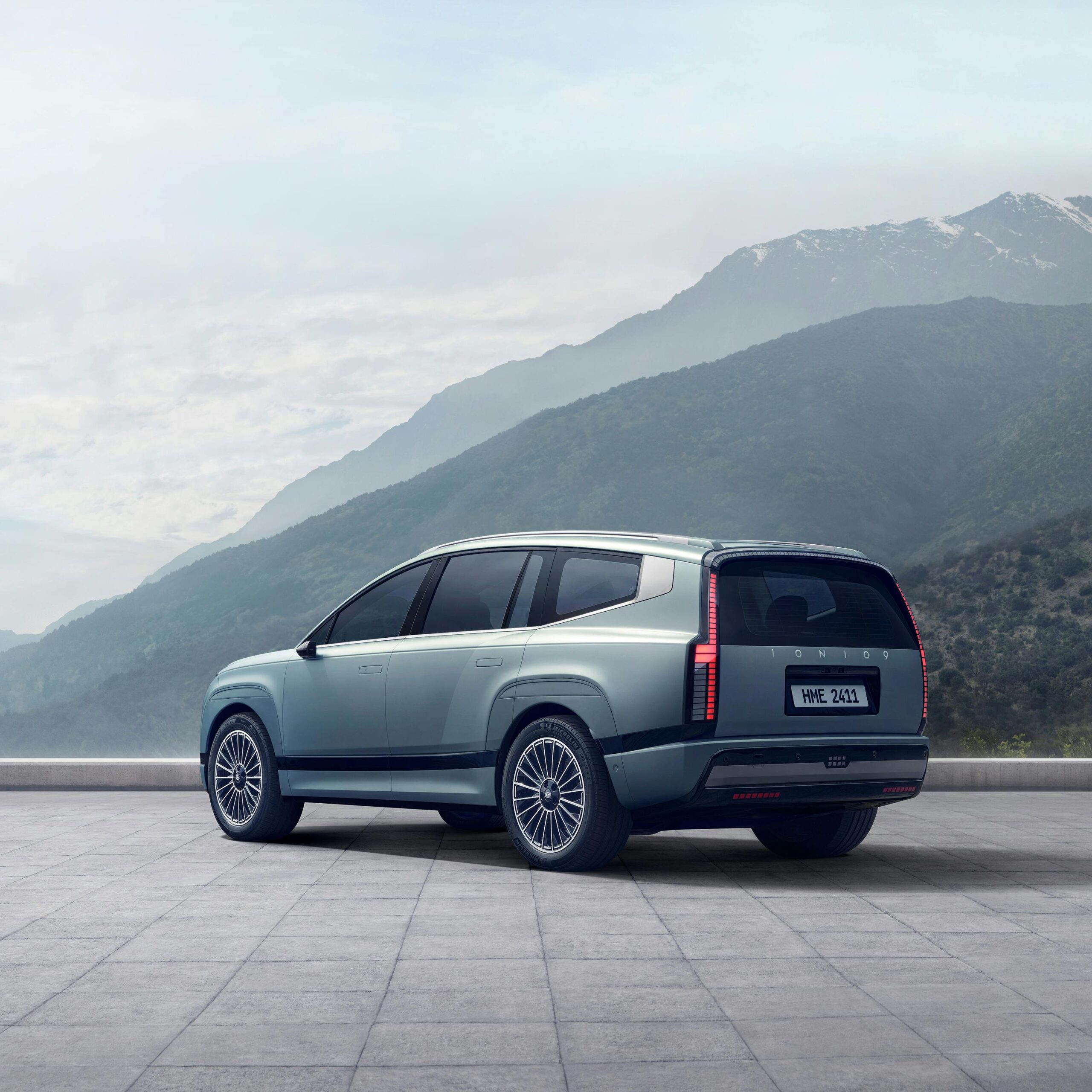The Hyundai Ioniq 5 of 2023: A Mass-Market Superstar Rather Than a Speciality Product
Early adopters’ interest in commonly used mobility solutions has driven the electric vehicle business to grow rapidly
. Because it shows how attractive design, technology, and convenience may produce overall financial success rather than because it is unusual, the 2023 Hyundai Ioniq 5 is a milestone in this trend.
Despite its beautiful appearance and prizes (such as 2022 World Car of the Year), the Ioniq 5 is clearly not a specialized automobile 613.
. Its manufacturing volume, pricing plan, and aesthetic approach match those of massmarket crossovers like the Ford Mustang MachE and Volkswagen ID.4 rather than being limited edition wonders like the Polestar 1 or Lexus LFA.
AntiNiche Blueprint: Sales Volume and Mass Production
High Sales Statistics: Between Q2 2023 and Q2 2024 2, Hyundai sold 37,578 Ioniq 5 vehicles just in the United States, outperforming niche EVs, which generally sell less than 10,000 units.
This book captures Hyundai’s goal of capturing the mainstream EV market rather than catering to a niche one.
As proof of great consumer interest and competitive positioning against rivals like the Tesla Model Y and Kia EV6, dealerships routinely added $5,000 to $10,000 premiums above the MSRP 12.
The Ioniq 5 was Hyundai’s first vehicle based on the E-GMP architecture and is no doubt a family of vehicles with tons of common parts to enable economies of scale, such as the Ioniq 6 sedan and not yet unveiled Ioniq 7 SUV 6
. This is the antithesis of niche vehicle manufacturing.
Table: Vehicle Matching and Pricing
Model Base Price Niche indicators for U.S. yearly sales (approx.) 2023 Hyundai Ioniq 5 37,578+$42,745High volume, mainstream price Polestar 1 ~450 (worldwide)$155,000Limited production, bespoke production Total Lexus LFA 500$375,000(handbuilt, collector item).
🚘 2. Engineering and Design: The Balance Between Innovation and Affordability.
Beautiful is as beautiful does: The Ioniq 5 is often referred to as an “DeLorean hot hatch” 13 styled vehicle, however this design is not so much about aesthetics, as it is about everyday use.
The Ioniq 5 thinks about family, not track enthusiasts, so the Ioniq 5’s cargo area (20.2 cu-ft), reclining seats, and sliding centre console (that can secure groceries or drinks) matter 6.
Powertrain for Use, Not Exclusivity: The dual-motor AWD variant has 320 hp and 446 lb-ft of torque, resulting in quick 0-60 mph acceleration (4.4 seconds), while its efficiency (3.0 mi/kWh) 2 and 266 – 303 miles of range are more suitable for the commuter than the performance driver.
The Ioniq 5 N (641 hp, track tuned) is aimed at a niche audience as less than 5% of all sales come from this variant showing the emphasis on the base model.
User-Oriented Technology: Despite a 12.3-inch infotainment and AR HUD 6 presenting well, Hyundai avoided flashy, niche technology.
Infrastructure and Charging: Built for Real-World Tradeoffs
Reliance on Public Charging: An 18-month trial by a MotorTrend editor showcased the Ioniq 5’s potential without the need for home charging, a key selling point for consumers residing in urban apartments.2. This degree of accessibility is rarely prioritized by fringe EVs.
Battery Preconditioning for Uniformity: This 2023 attribute reduces charge times by 50% or so in cold weather by preheating the battery prior to DC fast-charging 817.
Hyundai is clearly focused on solving everyday challenges (e.g., inconsistent charging speeds), which, while enjoyable as a perk, serve as markers of mass-market pragmatism.
Cost Effectiveness: Public charging costs $0.14 per mile2 — this is slightly less than gas- powered automobiles (approximately $0.23 per mile), but it is substantially more expensive than EV’s that are charged at home.
Price-conscious, not luxury buyers, find this transparency appealing.
Pricing Approach: Focus on the Middle Class of EV Users.
Off-the-Shelf Price Ranges: The Ioniq 5 competes directly with the Kia EV6 and Volkswagen ID.4, with prices starting from $42,745 (SE Standard Range) and ranging to $58,005 (Limited AWD)68! Even with a $1,500 increase for 2023-12, it is still a few dollars under luxury competitors like the Audi Q4 e-tron.
Reduction of Tax Credit: The ownership cost rises,
linked with being disqualified from the $7,500 federal EV credit (due to South Korean assembly) 12, are hefty, but didn’t discourage buyers, showing clear widespread demand outside of incentive-race markets.
Trim Options: Hyundai has 4 trim levels (SE, SEL, Limited) and RWD/AWD options, catering to both customers interested in features, and customers who want an electric vehicle within a particular pricepoint, 8. This level of variety is very atypical for niche vehicles.
Comfort Over Specialization of Drive Experience
“Adult Responsible” Dynamics: According to Top Gear, its “lounge-y interior”, and comfort topped drivability,13 emphasis is put on driving for daily purposes as opposed to an emphasis on sportiness.
The body roll of the Ioniq5, coupled with its 4,700-lb curb weight communicates crossover DNA, and while it delivered competent level of performance, it was not achieved at the expense of the comfort.
Efficiency, Not Enthusiasts: Regenerative Braking levels are adjustable by paddles instead of tracking performance. regen levels are designed to improve efficiency.
, the Ioniq 5 has stability-oriented tuning 9, and the fun rear-biased torque delivery in sport mode does not overshadow the tuning.
Safety for Families: Hyundai SmartSense (including blind-spot collision avoidance 6, and freeway driving assistance) are family elements, whereas the specialisation in consumption/minimalist rawness indicated a customer that is not the typical consumer.
🔮 Final Thoughts: The Normcore EV
The Ioniq 5 is celebrated, as a retro-futuristic smashing success, but there is nothing exclusive about it: It’s all about democratisation.
As Hyundai aimed for high-volume with the Ioniq 5, they thought about the school runs, the weekends-away, the supermarket errands, and desirable balance of electric range, utility and style, not garage queen.
MotorTrend pillared it as a “benchmark for mainstream EVs” 2 that in their words meant “rivals still have catching up to do.”
Everyone is waiting for the Ioniq 5 N to offer legitimate niche excitement, while for us, the brilliance of the “regular” Ioniq 5 is that it really shows that mass-market EVs do not have to give up appeal.
The Ioniq 5 for us is the practical Tesla Model Y 136, it’s a real victory for access in a market of compliance autos.
As the EV infrastructure matures its legacy can be acknowledged as being far more about putting exciting electrification in the hands of the masses, than it not being unique.














Post Comment